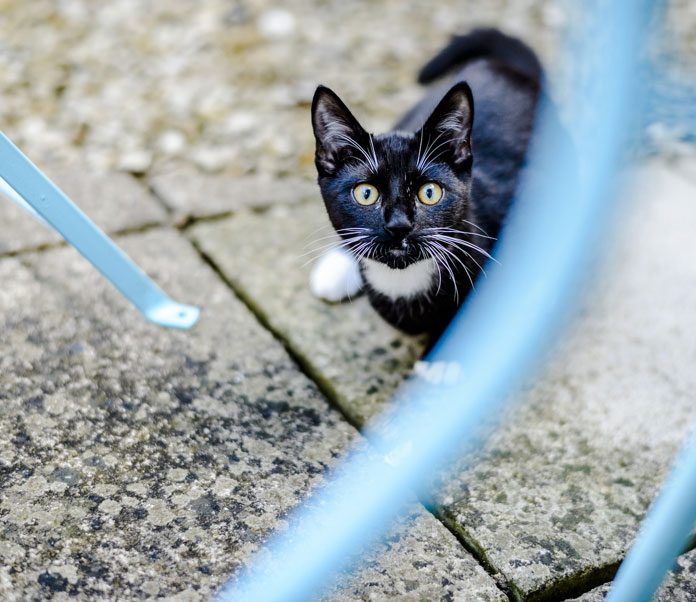Why should dogs have all the fun? Many indoor cats would love to go outside and
enjoy the sun but it is often far too dangerous to let them simply wander about as they
please. Busy roads, large dogs and careless people are hazards many of us don’t want our
cats exposed to. So why not teach him to walk on a leash?
But cats don’t walk on leashes! That’s the sentiment many people have when the
idea is first introduced. It’s true that some cats will absolutely have nothing to do with the
whole business. They apparently think it is entirely beneath them to be seen out of doors
on a leash. What would the neighbors think! Fortunately, there are other cats willing to
entertain the idea and some who actually come to like their walks. There really isn’t any
way of knowing which way your cat will turn out unless you try. Let’s get started.
The first thing you will need is a properly fitting harness and a light weight leash.
It doesn’t need to be fancy, just sturdy and well made. Trying to teach your cat with only
a collar is not a good idea. Pressure around their necks seems to make some cats freeze.
You want to teach him to move forward, not lock in place. The second thing you will
need is a bag of treats. Preferably something he really likes but doesn’t often get. The
third thing you will need is lots and lots of patience.
Begin training inside your home. Do not take him outside until he is walking
freely and comfortably along with you on his leash. Place the harness on your cat and let
him get accustomed to it. If your cat is particularly timid, you might want to leave the
harness where he can investigate it and get used to seeing it first before you put it on him.
Leave the harness on him for ten to fifteen minutes a day for the first few days. After that
the period can be raised to fifteen to twenty minutes. Give him one or two treats during
the time he is wearing the harness so that he associates it with good things. When he is
fully comfortable with the harness, add the leash in the same manner, allowing him to
drag it around for a slowly increasing period over several days. Don’t forget the treats.
 By now, your cat is comfortable wearing both harness and leash. Pick up the end
By now, your cat is comfortable wearing both harness and leash. Pick up the end
of the leash and just hold it. Don’t try to lead him anywhere. Follow him around if he
moves. Do this exercise for a few minutes a day until he is comfortable with it. Now
comes the big step, teaching him to follow where you lead. Place your cat to your left
side, your leash should be in your left hand. Let your arm hang relaxed at your side. Take
a treat in your right hand. Turn toward your cat and show him the treat. Now take a
couple of step forward, continuing to show the treat. If he follows you, take a couple of
more steps. If he follows to your new position, give him his treat and praise. If he is
reluctant to move forward, place the treat closer to him. Praise him if he takes a step
forward and give him the treat. If he doesn’t want to move forward no matter what you
do, don’t drag him. Pick him up and take him somewhere else to take his harness off. Do
not give him a treat since he didn’t do as you asked. Here is where patience comes in.
Keep repeating the lesson every day, asking him to move farther each time.
When your cat is walking freely on leash with you all over the house, take him
into your back yard and walk him around in it. If he freezes and refuses to move, don’t
panic. Reassure him he is safe and take him back inside. Try again tomorrow. If he tries
to take off on his own you can easily check him with your leash. Once he is comfortable
in the yard you can start taking him farther. Before long you will be able to take nice
walks wherever you choose.

































